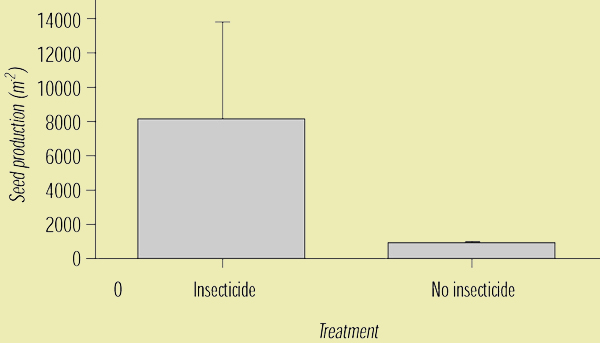To allow for the first and second possibilities, densities of biological control agents on treated and untreated plants must be sampled.
The approach is perhaps best suited to small-scale experiments because of drift and residue problems. This approach is not widely used because of the practical difficulties, but should be attempted more often.
All recommended precautions, such as wearing protective clothing and a mask, washing hands after handling, etc. should be followed when using insecticides.
An insecticidal exclusion experiment was used by Lonsdale et al.
(1995) to investigate the effects of a biological control agent, the chrysomelid
Calligrapha pantherina, on the malvaceous annual tropical weed Sida
acuta. Twenty permanent 1 m2 quadrats were marked out amongst healthy flowering stands of S. acuta in a heavily infested pasture. Half of the quadrats were randomly allocated an application of the systemic, granular insecticide carbofuran which was applied to the soil. Beetles were released at one end of the paddock and the resulting population allowed to expand over the
quadrats. At the end of flowering all vegetation in the quadrats was clipped at ground level and the
S. acuta separated out. A number of plant demographic characters were measured from these samples. The most dramatic impact on the plant was the reduction in seed production caused by the action of the beetle
(See Figure below).
Use of insecticide exclusion in an experiment to
measure impact of a control agent.
Effect of Calligrapha pantherina
on Sida acuta populations in 1990. Values are
geometric means with
95% confidence limits (See Lonsdale
et al. 1995).

[ Next ]
Grant Farrell and
Mark Lonsdale
